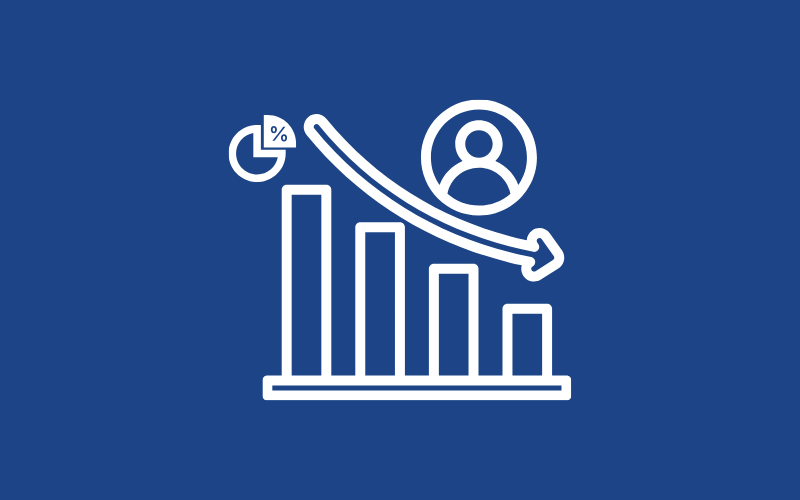Introduction
In the fast-paced world of business, understanding key metrics is vital to success. One such metric that plays a crucial role in the survival and growth of a business is churn rate. But what is churn rate, and why is it so important? In this article, we will delve deep into this concept, exploring its definition, significance, and strategies to manage it effectively.
What Is Churn Rate?
Churn rate, often referred to as customer attrition rate, is a metric that calculates the percentage of customers who cease to use a product or service during a specific period. This metric is invaluable in gauging customer satisfaction and loyalty. It’s calculated using the following formula:
Churn Rate = (Customers at the Start of the Period – Customers at the End of the Period) / Customers at the Start of the Period
Why Does Churn Rate Matter?
High churn rates can be detrimental to any business. They not only indicate that customers are leaving but also signify that your efforts in acquiring them have gone to waste. Let’s explore why churn rate matters:
- Revenue Impact: When customers leave, revenue decreases. This directly affects the bottom line and profitability of a company.
- Customer Acquisition Costs: Acquiring new customers is often more expensive than retaining existing ones. High churn rates mean you’re spending more resources to replace lost customers.
- Reputation and Trust: A high churn rate can tarnish your reputation, making potential customers hesitant to engage with your brand.
- Feedback Loop: Churned customers can provide valuable feedback, highlighting areas of improvement in your product or service.
- Sustainability: Reducing churn ensures the sustainability and long-term growth of your business.
Strategies to Reduce Churn
Provide Exceptional Customer Support
Offering top-notch customer support can significantly reduce churn. When customers feel valued and supported, they are less likely to leave. Respond promptly to inquiries, resolve issues efficiently, and gather feedback to enhance your offerings.
Personalization is Key
Tailor your product or service to individual customer needs. Use data-driven insights to provide personalized recommendations and offers. Customers who feel their needs are understood are more likely to stay loyal.
Continuous Improvement
Regularly update and improve your product or service. Stay ahead of competitors by incorporating new features, fixing bugs, and addressing pain points. A stagnant offering can lead to customer dissatisfaction.
Loyalty Programs
Reward loyal customers with incentives like discounts, exclusive access, or loyalty points. These programs encourage customers to stick around and engage more with your brand.
Analyze Churn Data
Dive deep into churn data to identify patterns and common reasons for customer departure. Use this information to make data-driven decisions and implement targeted strategies.
Foster Community
Create a sense of community around your brand. Engage customers through social media, forums, or user groups. Building a community can strengthen customer loyalty and reduce churn.
FAQs
Is churn rate the same as customer turnover?
No, churn rate and customer turnover are often used interchangeably, but they can have slightly different nuances. Churn rate typically refers to the percentage of customers who leave during a specific period, while customer turnover can also include customers gained during that period.
What is a healthy churn rate?
A healthy churn rate varies by industry but is generally low. A rate of 5-7% or lower is often considered acceptable, but it’s essential to benchmark against industry standards.
Can a high churn rate be reversed?
Yes, a high rate can be reversed with the right strategies. By improving customer experience, addressing pain points, and offering personalized solutions, you can win back customers and reduce churn.
How often should I calculate churn rate?
This should be calculated regularly, preferably on a monthly basis, to track changes over time accurately.
Are there industries with naturally high churn rates?
Yes, some industries, like streaming services or mobile apps, may naturally have higher churn rates due to the competitive landscape and changing consumer preferences. However, reducing churn is still crucial in these sectors.
What role does customer feedback play in reducing churn?
Customer feedback is invaluable in identifying the root causes of churn. By listening to customer concerns and making improvements based on their feedback, you can proactively reduce churn.
Conclusion
Understanding what churn rate is and its impact on your business is paramount for sustainable growth. By implementing strategies to reduce churn and focusing on customer satisfaction, you can ensure the long-term success of your venture. Remember, it’s not just about acquiring new customers; it’s about retaining and nurturing the ones you already have.


